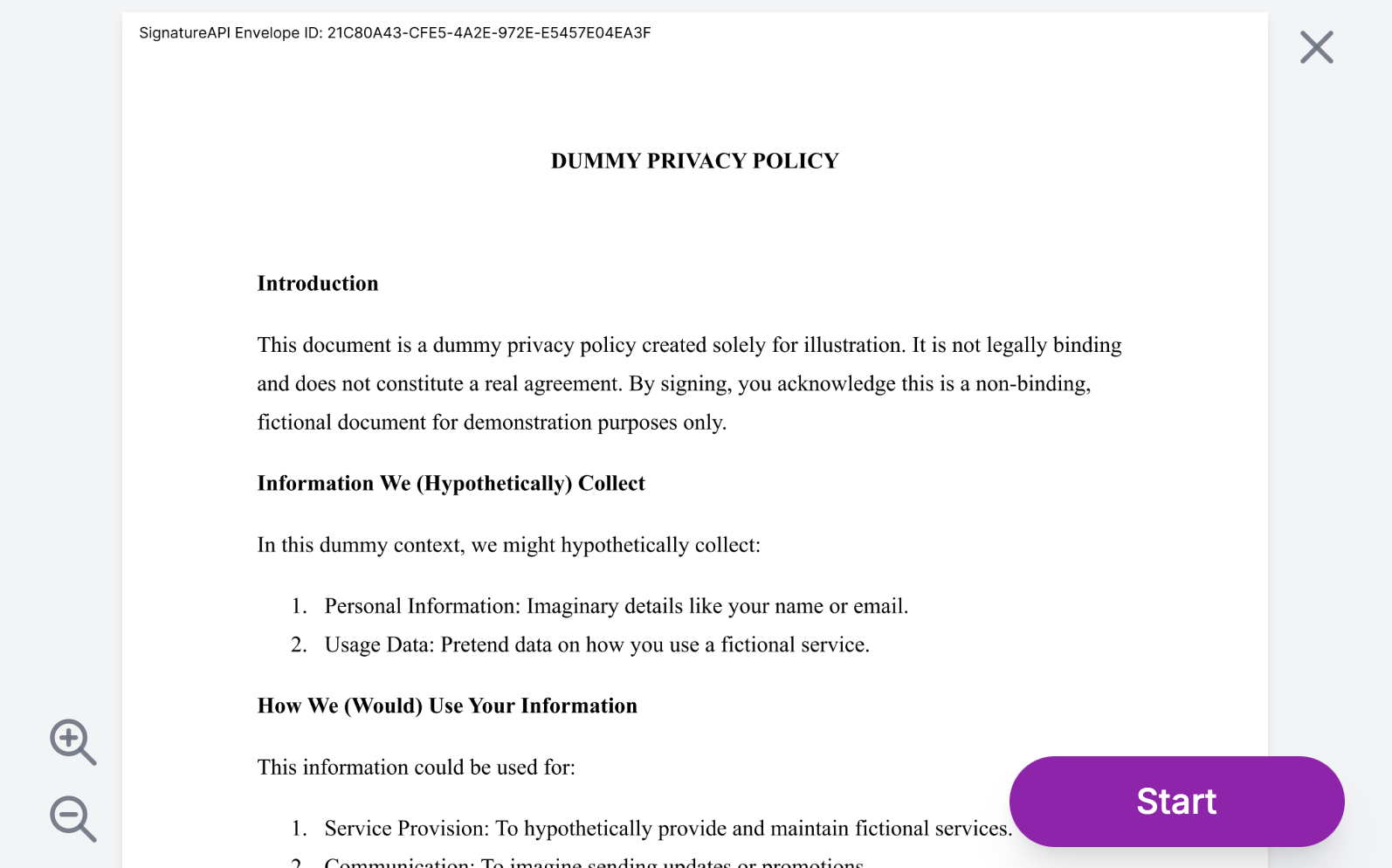Signature Options
We’ve added a new signature_options property to the recipient object. This lets you explicitly control which signature types a recipient can use during the ceremony.
The property accepts an array with the values drawn and/or typed. The first item in the array determines the signature option shown first to the recipient.
By default, signature_options is set to ["typed","drawn"], so recipients see the type signature option first, followed by the drawn signature.
If you want recipients to only draw their signatures, set the array to ["drawn"]. In this case, the typed option will not be available.
Here’s an example of a recipient configured to allow drawn signatures first, then typed signatures:
{
"type": "signer",
"key": "client",
"name": "Alice Smith",
"email": "alice@example.com",
"signature_options": ["drawn", "typed"]
}
And here’s a recipient forced to draw their signature with no typed option:
{
"type": "signer",
"key": "visitor",
"name": "Bob Johnson",
"email": "bob@example.com",
"signature_options": ["drawn"]
}
This feature is fully backward compatible. If omitted, the default applies.
For more details, see the Recipients object in the documentation.
